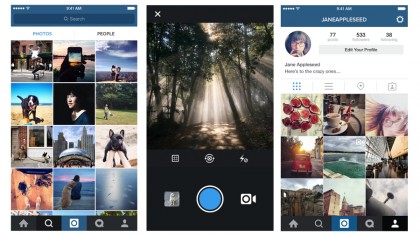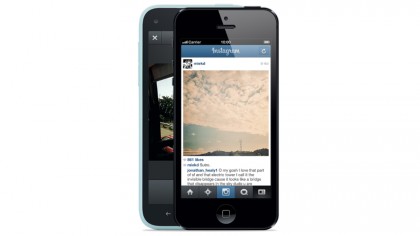The reasons why Instagram will be the next big platform
Engagement on Instagram is seven times higher than on Twitter and Facebook…
How does Instagram's new advertising capability work?
Instagram has three types of advertising formats: clicks to website ads, video ads and mobile app download ads. "Instagram ads are bought through Facebook's advertising interface," says James Mortimer, Senior Paid Social Analyst at iCrossing. "This means brands can seamlessly tap into existing Facebook targeting, which includes custom audiences like site visitor data, email lists and lookalikes." All of this makes launching well-targeted, sophisticated Instagram campaigns quick, easy and rewarding.

"You can create a multi-product ad in Facebook and use it directly on Instagram," says Bernarde of the carousel ads on Instagram. "It all works through Facebook's Power Editor, which means your ads can be integrated across both campaigns, and you can use the targeting you know works through Facebook."
However, Instagram's move into the advertising space is largely still an experiment. "Instagram ads are still a massively unknown beast for many small to medium-sized brands, because it is being slowly rolled out via the mothership advertising platform," says Barr, referencing Facebook. "Instagram ads will be available to all from some point in October 2015, and you can bet that they will be as simple to deploy as Facebook's wider advertising offerings."

Can Instagram dominate the new 'social commerce'?
"The immediacy and intimacy of Instagram, as well as the mobile-only optimisation, creates an authentic experience that makes Instagram ideal for social commerce," says Trunzo, who thinks that for retailers and brands that have no comprehensive mobile strategy, Instagram is often a good first step to get into the mobile space and begin capturing mobile revenue.
"Of all brand effect surveys, 90% have shown a brand uplift of 16 points, 2.75 times higher than Nielsen norms," says Pringle, who reports that an online/e-commerce brand recently showed a 13% uplift in post-view return on investment in comparison to other social media platforms. Most expect Pinterest-style click-through links for products to come to Instagram. "It is certainly an excellent driver to an e-commerce website," says Pringle, "but it's too early to really tell what any in-app buy function will look like and deliver."
Key to its success is the fact that Instagram is supremely engaging. "Recent Forrester Research showed that Instagram users are 58 times more likely to like, comment, or share a brand's post than Facebook users, and 120 times more likely than Twitter users," says Knight. "The platform also allows interest targeting, based upon those brands you're following, so advertising messaging is more likely to be appropriate to the end consumer."

Is Instagram now more important than Twitter?
As well as having 100 million more users than Twitter, Instagram's genius is that it's built on the most successful social media advertising platform of all time – Facebook. "Instagram represents a giant opportunity for advertisers to reach more users and extend the performance of their existing Facebook campaigns," says Mortimer. "With the brands that advertise on Facebook likely to now extend their campaigns onto Instagram this could seriously start to cut into Twitter budgets."
Are you a pro? Subscribe to our newsletter
Sign up to the TechRadar Pro newsletter to get all the top news, opinion, features and guidance your business needs to succeed!
It's not just numbers that Twitter loses out on, but a lack of both community and integration with other social networks. "Instagram has more of a community feel, and all images can also be shared across Facebook for a wider reach," says Bernarde.
Last big hope
"It is very much the last big hope of everyone in social marketing land because of its natural, organic engagement, compared to the ever-rising cost to brands of using Facebook and Twitter to drive engagement and build communities," says Barr, though he's unsure whether Instagram can truly wrestle business away from rival social media platforms. "It is too early to call – if not done correctly, it could drive brands back over to Twitter," says Barr.
With Twitter unable to escape its 'breaking news' focus (though it has partnered with Google for ad buying) and Facebook keen to follow suit (check out its new Facebook Signals concept for journalists), Instagram's naturally visual approach sits somewhere in-between the 140 characters and serious social media, respectively, of its text-based rivals.
However, there is no going back for Instagram; poorly executed and irritating advertising campaigns could easily be its death. "Right now, Instagram is hotter than it has ever been," says Barr. "Advertising will be the make or break of it as a platform."
Jamie is a freelance tech, travel and space journalist based in the UK. He’s been writing regularly for Techradar since it was launched in 2008 and also writes regularly for Forbes, The Telegraph, the South China Morning Post, Sky & Telescope and the Sky At Night magazine as well as other Future titles T3, Digital Camera World, All About Space and Space.com. He also edits two of his own websites, TravGear.com and WhenIsTheNextEclipse.com that reflect his obsession with travel gear and solar eclipse travel. He is the author of A Stargazing Program For Beginners (Springer, 2015),
